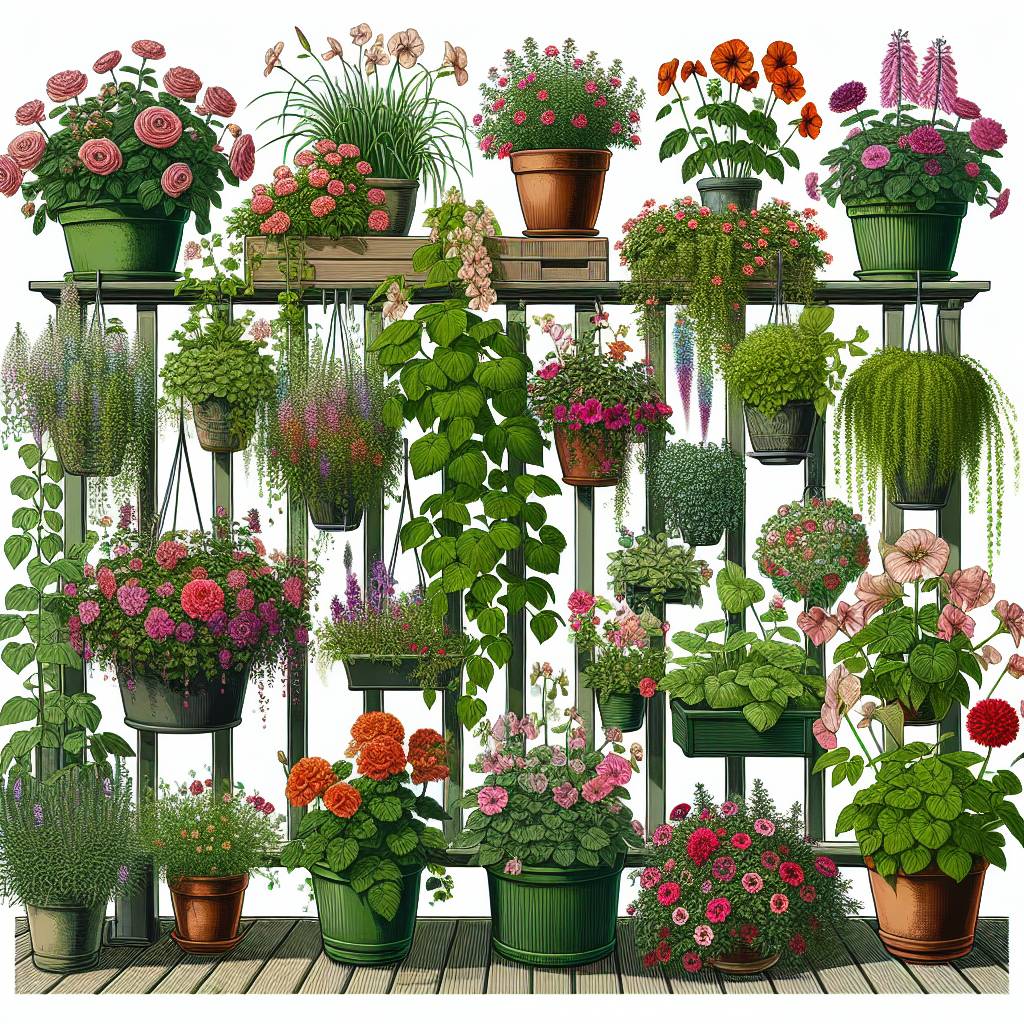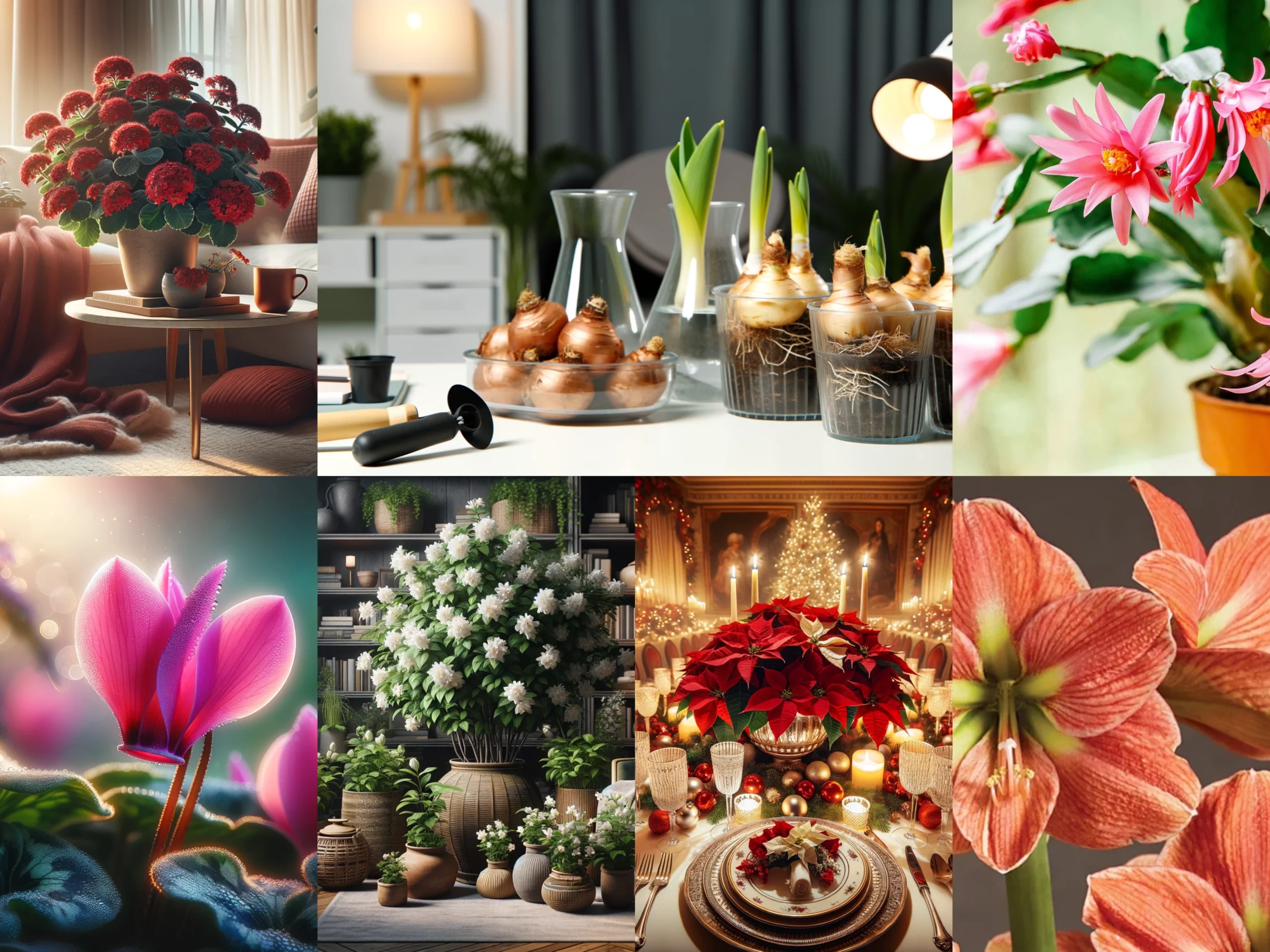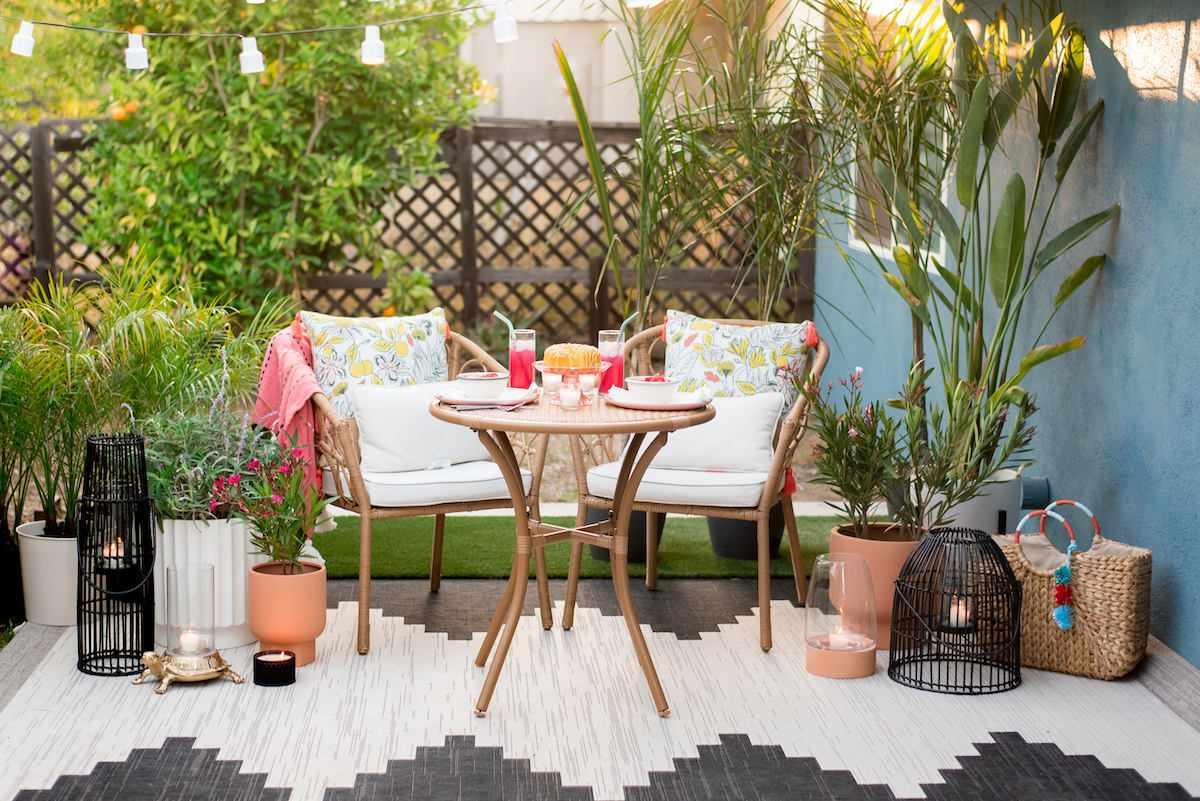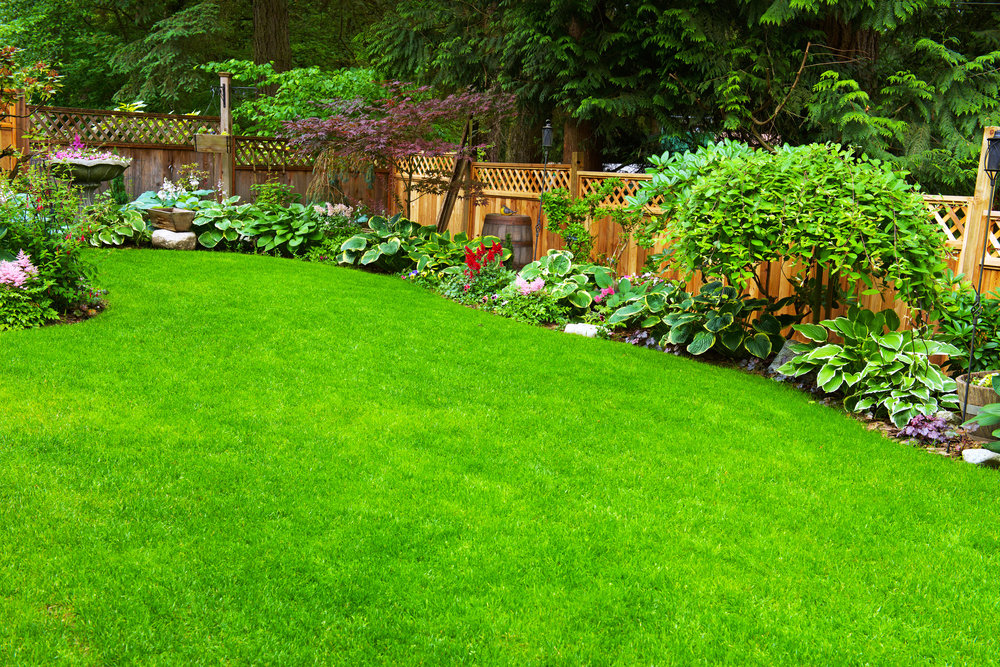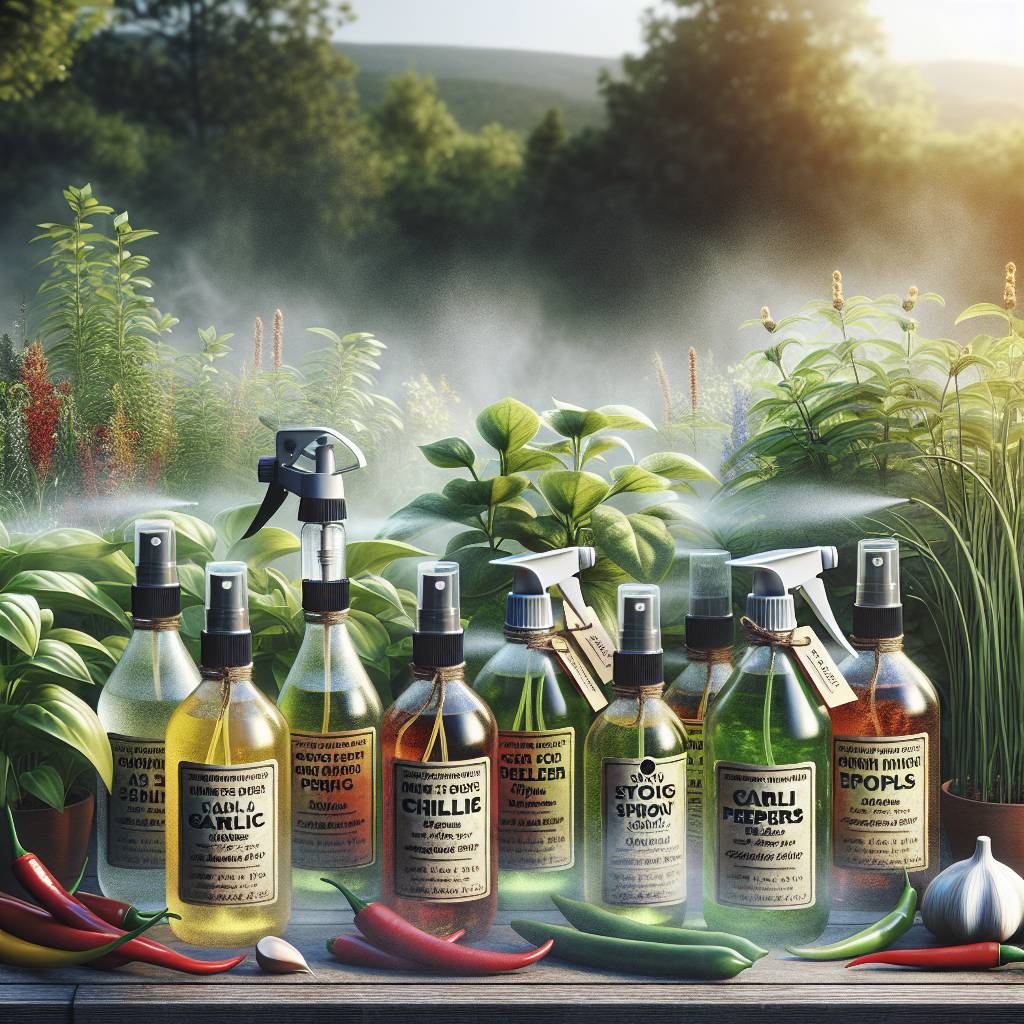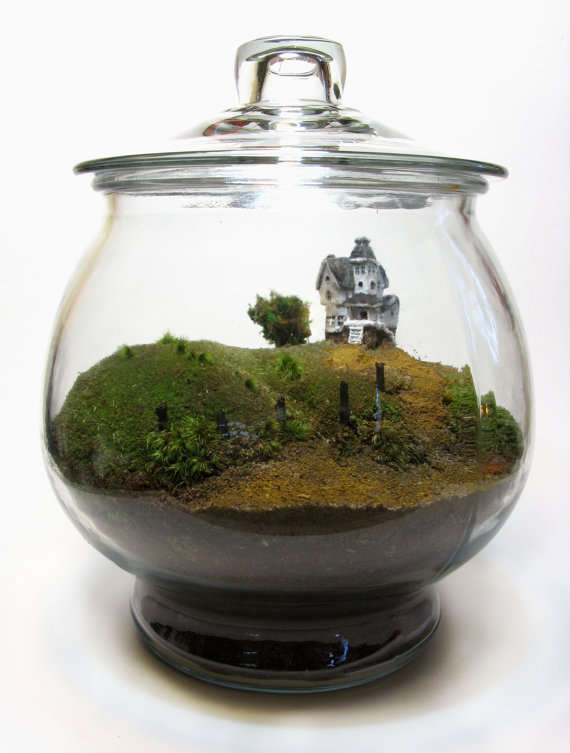Want to turn your urban balcony into a blooming oasis? Discover the top flowering plants that thrive in small spaces, adding vibrant colors and delightful fragrances to your city haven. Whether you’re a novice gardener or have a green thumb, these resilient blooms are perfect for bringing life to your urban retreat. From cascading petunias to compact marigolds, gardeners can find the best floral varieties that will flourish in pots and planters for their balcony gardens. Elevate your outdoor space with these stunning blossoms while attracting butterflies and hummingbirds right to your doorstep.
Key Takeaways
- Choose flowering plants that are suitable for small balconies based on their size, growth habit, and container requirements.
- Opt for colorful plants that thrive in limited space, such as petunias, geraniums, and begonias, to add vibrancy to your balcony garden.
- Select the best flowering plants for either sunny or shaded balconies, such as marigolds for sunny spots and impatiens for shaded areas.
- Create a private oasis on your balcony by strategically placing tall plants or using trellises and hanging baskets for added privacy.
- Consider drought-resistant flowers like lavender, yarrow, or sedum to ensure easy maintenance and prolonged blooms in your balcony garden.
- Attract hummingbirds with vibrant balcony blooms like fuchsia, salvia, or bee balm to enhance the natural beauty of your outdoor space.
Selecting the Perfect Flowering Plants for Small Balconies
Maximizing Space with Size and Growth Habit
It’s crucial to consider the space available and choose compact plant varieties in different colors that won’t overwhelm a small balcony. Opt for plants like petunias or begonias, which are known for their ability to thrive in confined spaces while still producing an abundance of colorful blooms. By selecting smaller plants, you can maximize the use of your limited space without sacrificing the beauty of your garden.
When choosing balcony plants, think about how they grow. Some spread out horizontally, while others grow vertically. For example, trailing petunias, a flower, are perfect for hanging baskets as they spill over the edges and create a stunning visual display without taking up valuable floor space. On the other hand, vertical planters are ideal for accommodating climbers such as morning glories or sweet peas, allowing them to reach impressive heights without encroaching on your balcony area.
Utilizing Hanging Baskets and Vertical Planters
Hanging baskets offer an excellent solution for adding greenery and color to a small balcony without using up precious floor space. They can be suspended from railings or hooks attached to ceilings, making them perfect for growing flowering plants like fuchsias or geraniums that cascade beautifully over the sides of the basket. This not only adds visual interest but also frees up floor space for other essential items.
Vertical planters are another ingenious way to make use of limited space on a small balcony. These planters can be mounted directly onto walls or hung from railings, providing opportunities to grow various types of flowering plants such as nasturtiums or lobelias in a vertical arrangement. Not only does this create an eye-catching display but it also maximizes every inch of available space by allowing you to cultivate multiple plants within a small footprint.
Thriving Colorful Plants for Limited Space
Low-Maintenance Choices
. Opt for species like marigolds or geraniums as they thrive in limited space and require minimal care. These plants are perfect for busy individuals who want to enjoy the beauty of nature without extensive upkeep. By choosing low-maintenance options, you can ensure that your balcony remains colorful and lively with minimal effort.
Consider incorporating pansies into your urban garden. Pansies are known for their ability to bloom profusely while requiring little attention. Their compact size makes them ideal for small spaces, and they come in a variety of colors, adding visual interest to your balcony garden.
Long Blooming Periods
When selecting flowering plants for an urban balcony garden, prioritize those with long blooming periods. This ensures that you can enjoy continuous bursts of color throughout the seasons. For instance, petunias are an excellent choice due to their extended blooming period which spans from spring through fall. By planting petunias in your window boxes or railing planters, you can create a stunning display that lasts several months.
Furthermore, impatiens are another great option known for their prolonged blooming season and ability to thrive in shady areas—an essential consideration when dealing with limited sunlight on balconies shaded by nearby buildings or structures.
Creative Planting Solutions
In addition to selecting the right plants, it’s important to consider creative solutions such as window boxes or railing planters when working within confined spaces like urban balconies. These containers provide opportunities for vertical gardening and allow you to add vibrant colors at different heights without occupying valuable floor space.
Best Picks for Sunny and Shaded Balconies
Sun-Loving Flowers
The key is to select plants that thrive in full sun or part sun. For instance, vibrant zinnias are an excellent choice as they love soaking up much sunlight. Another great option is cheerful sunflowers, which flourish in sunny conditions and add a pop of color to your balcony garden.
Opting for flowers like zinnias or sunflowers ensures that your sunny balcony will be adorned with beautiful blooms throughout the growing season. These plants not only tolerate but actually require plenty of direct sunlight to flourish.
Shade-Tolerant Plants
For those with shaded balconies, it’s essential to choose plants that can thrive in environments with limited light. Consider incorporating shade-tolerant plants such as impatiens or ferns into your balcony garden. Impatiens, also known as busy Lizzies, are perfect for adding a burst of color even in areas with full shade.
In addition to impatiens, ferns are an excellent choice for shaded balconies due to their ability to thrive without direct sunlight. These lush green beauties can bring life and vibrancy even to the darkest corners of your outdoor space.
Mix of Sun-Loving and Shade-Tolerant Plants
If you have a partially shaded balcony receiving both ample sunlight and shadowed areas at different times of the day, consider creating a balanced mix of sun-loving and shade-tolerant plants. This approach allows you to take advantage of all available light conditions on your balcony.
Creating a Private Oasis with Balcony Plants
Creating Privacy Screens
Using tall plants like bamboo or ornamental grasses can effectively create privacy screens. These plants not only add a touch of greenery but also provide a natural barrier against prying eyes. The lush foliage of these tall plants acts as a shield, giving you the privacy you desire in your outdoor space.
In addition to tall plants, incorporating climbing vines such as morning glories or clematis on trellises can further enhance the privacy of your balcony garden. These balcony-friendly climbers grow upwards, covering walls and railings with beautiful blooms while adding an extra layer of seclusion. Imagine being surrounded by vibrant flowers and lush leaves as you relax on your balcony, shielded from neighboring views.
Layering Different Types of Plants
Layering different types of plants is another effective way to enhance privacy in urban balcony gardens. By combining various plant heights and textures, you can create visually appealing layers that not only beautify your space but also act as natural partitions. For instance, placing low-growing flowering plants at the front, followed by medium-sized shrubs or herbs, and then taller trees or bushes at the back creates depth and visual interest while providing additional screening.
Moreover, mixing different types of flowering plants with varying blooming seasons ensures that your balcony garden remains colorful throughout the year. This diverse selection not only adds beauty but also contributes to creating a private oasis right outside your door.
Drought-Resistant Flowers for Easy Maintenance
Choose Wisely
Selecting drought-resistant flowers is crucial. Opt for succulents like aloe vera or hens and chicks, or aromatic options such as lavender. These plants require minimal watering, making them perfect choices for busy urban dwellers.
Native Beauties Consider incorporating native plants into your balcony garden. Native species are naturally adapted to the region’s climate and rainfall patterns, requiring less maintenance and water. For instance, if you live in a dry climate, choose native wildflowers that thrive in arid conditions without much intervention.
Smart Containers
To ensure your flowering plants thrive with minimal water usage, utilize self-watering containers. These containers have built-in reservoirs that supply moisture to the soil as needed, reducing the frequency of manual watering while keeping your blooms healthy. Consider incorporating a drip irrigation system on your balcony to efficiently deliver water directly to the plant roots.
Inviting Hummingbirds with Vibrant Balcony Blooms
Nectar-Rich Flowers
Want to invite the delightful presence of hummingbirds to your urban balcony garden? Planting nectar-rich flowers like salvia and fuchsia is a surefire way to attract these charming birds. Their long, slender bills are perfectly adapted for sipping nectar from tubular-shaped blooms, making them frequent visitors to gardens adorned with such floral delights.
Did you know that salvia, also known as sage, comes in various vibrant hues? From deep reds and purples to bright pinks and blues, there’s a salvia variety for every color preference. Imagine your balcony garden abuzz with the fluttering of hummingbird wings as they dart from one colorful bloom to another!
Trumpet-Shaped Flowers
Another fantastic addition to your balcony garden is trumpet-shaped flowers such as honeysuckle and columbine. These enchanting blossoms not only add visual appeal but also serve as irresistible magnets for hummingbirds. The elongated shape of their petals acts like a beacon, guiding these tiny avian wonders straight into your urban oasis.
Picture this: on a tranquil morning or at dusk, when the city begins winding down, you can witness nature’s own aerial acrobats gracefully maneuvering around your balcony garden. With each delicate sip of nectar from the trumpet-shaped blooms, these dainty creatures bring an air of magic right outside your window.
Providing Water Sources
In addition to planting beautiful flowers that captivate hummingbirds’ attention, consider incorporating a water source like a birdbath in your balcony garden. Not only does it offer an essential element for the birds’ well-being but it also provides you with endless opportunities for observing their playful antics while they splash and bathe.
Imagine stepping onto your balcony on a warm summer day and being greeted by the sight of vibrant blooms swaying gently in the breeze while nearby hummingbirds take refreshing dips in the birdbath before returning to partake in nature’s sweet offerings within arm’s reach. It’s truly an experience that brings joy both indoors and outdoors simultaneously.
Incorporating Fragrance and Beauty with Herbs and Flowers
Fragrant Flowers for Aromatic Bliss
Consider planting fragrant flowers like roses or jasmine. These blossoms not only add a pop of color but also fill the air with their sweet scents. Picture yourself enjoying a morning cup of tea surrounded by the soothing fragrance of blooming roses – it’s an experience that can elevate your mood and bring tranquility to your space. Incorporating these fragrant flowers can attract beneficial insects like bees, contributing to the health of your little garden ecosystem.
Another great option is to include herbs such as lavender or mint in your balcony garden. These aromatic herbs release delightful scents when touched, providing an instant sensory treat whenever you brush past them. Imagine reaching out to snip some fresh mint for your evening mojito and being enveloped in its refreshing aroma – it’s like having a mini herb spa right outside your door! Not only do these herbs offer olfactory pleasure, but they also serve practical purposes in cooking or making herbal teas.
Visual Appeal with Aromatic Infusion
In addition to their aromatic benefits, combining flowering plants and herbs creates a visually appealing space on your urban balcony. The vibrant colors of flowering plants like petunias or geraniums can add life and vibrancy to even the smallest outdoor areas. Pairing them with lush greenery from fragrant herbs such as basil or thyme creates an eye-catching arrangement that invites both admiration and utility.
Moreover, utilizing containers strategically allows you to work within limited spaces while still achieving stunning results. Hanging baskets overflowing with cascading petunias not only save floor space but also create a picturesque display at eye level. Placing potted lavender near seating areas infuses the air with its calming scent while adding elegance through its delicate purple blooms.
Designing Your Balcony Garden Aesthetics
Color Scheme
When designing your balcony garden, it’s essential to choose a color scheme that complements the space. Consider using pastel tones for a soft and serene ambiance, or opt for bold, contrasting colors to create an eye-catching display. For instance, you can combine vibrant red geraniums with deep purple petunias for a striking visual impact.
To enhance the aesthetics of your balcony garden, think about combining plants with different leaf shapes and sizes to introduce varying textures. Pair delicate ferns with broad-leafed begonias or mix spiky succulents with trailing ivy. This diversity adds visual interest and depth to your garden while creating a lush and dynamic environment.
Decorative Elements
In addition to selecting the right plants, incorporating decorative elements such as colorful pots and garden ornaments can elevate the overall look of your balcony garden. Opt for decorative pots in various shapes, sizes, and hues to add personality and flair. You could also include whimsical garden ornaments like wind chimes or fairy lights to infuse charm into the space.
Expanding Choices with Fruits and Vegetables
Compact Fruit Trees
Compact fruit trees are an excellent choice. You can grow varieties like citrus or dwarf apple trees in containers, making them perfect for small spaces. These trees not only provide beautiful blooms but also yield delicious fruits. For example, a potted Meyer lemon tree can add fragrance and color to your balcony while producing juicy lemons for culinary use.
Growing vegetables in a limited space is possible by opting for compact varieties. Cherry tomatoes and lettuce are good choices as they don’t require much room to flourish. Their vibrant colors and lush foliage can enhance the visual appeal of your balcony garden while providing fresh produce for your kitchen. These vegetables thrive in pots or hanging baskets, adding versatility to your gardening options.
Utilizing vertical gardening techniques is a smart way to maximize space when growing fruits and vegetables on your urban balcony. By using trellises, hanging planters, or wall-mounted containers, you can make the most of every inch of available space. This opens up opportunities to cultivate different varieties of fruits and vegetables simultaneously without overcrowding the area.
Benefits of Compact Options
The advantage of cultivating compact fruit trees such as citrus or dwarf apple varieties lies in their ability to thrive in confined areas without compromising on aesthetics or productivity. These top flowering plants bring beauty through their blossoms while offering flavorful harvests within arm’s reach.
Opting for smaller-sized vegetable plants like cherry tomatoes or lettuce enables you to enjoy homegrown produce even if you have limited outdoor space available on your balcony garden. Their petite stature allows them to fit comfortably into pots, planters, or hanging baskets without overwhelming the area.
Summary
You’ve now explored a variety of options for creating a stunning urban balcony garden filled with vibrant, flourishing plants. From selecting the perfect flowering plants for small spaces to incorporating fragrant herbs and flowers, you’ve discovered how to design an aesthetically pleasing oasis. Whether your balcony is sun-soaked or shaded, you’ve learned about the best picks for each setting and how to attract hummingbirds with colorful blooms. You’ve gained insights into incorporating drought-resistant flowers for easy maintenance and expanding your choices with fruits and vegetables. Now it’s time to put your newfound knowledge into action and transform your urban balcony into a breathtaking outdoor sanctuary!
Frequently Asked Questions
What are the best flowering plants for small balconies?
If you have a limited space, consider petunias, geraniums, or begonias. These plants thrive in containers and provide beautiful blooms without taking up too much room.
How can I attract hummingbirds to my balcony garden?
To invite hummingbirds, incorporate nectar-rich flowers like fuchsia, salvia, or bee balm. These vibrant blooms will not only add color to your balcony but also attract these delightful little birds.
Which flowering plants are suitable for both sunny and shaded balconies?
For versatile options that can thrive in various light conditions, try impatiens, coleus, or pansies. They adapt well to both sunny and shaded spots on your balcony.
What are some low-maintenance flowering plants suitable for urban balcony gardens?
Consider drought-resistant options such as succulents, lavender, or yarrow. These plants require minimal care and still offer beautiful blooms for your urban oasis.
Can I incorporate fruits and vegetables into my balcony garden along with flowering plants?
Absolutely! You can grow cherry tomatoes, strawberries or dwarf citrus trees alongside your flowering plants. This adds variety to your garden while making it visually appealing and functional at the same time.
